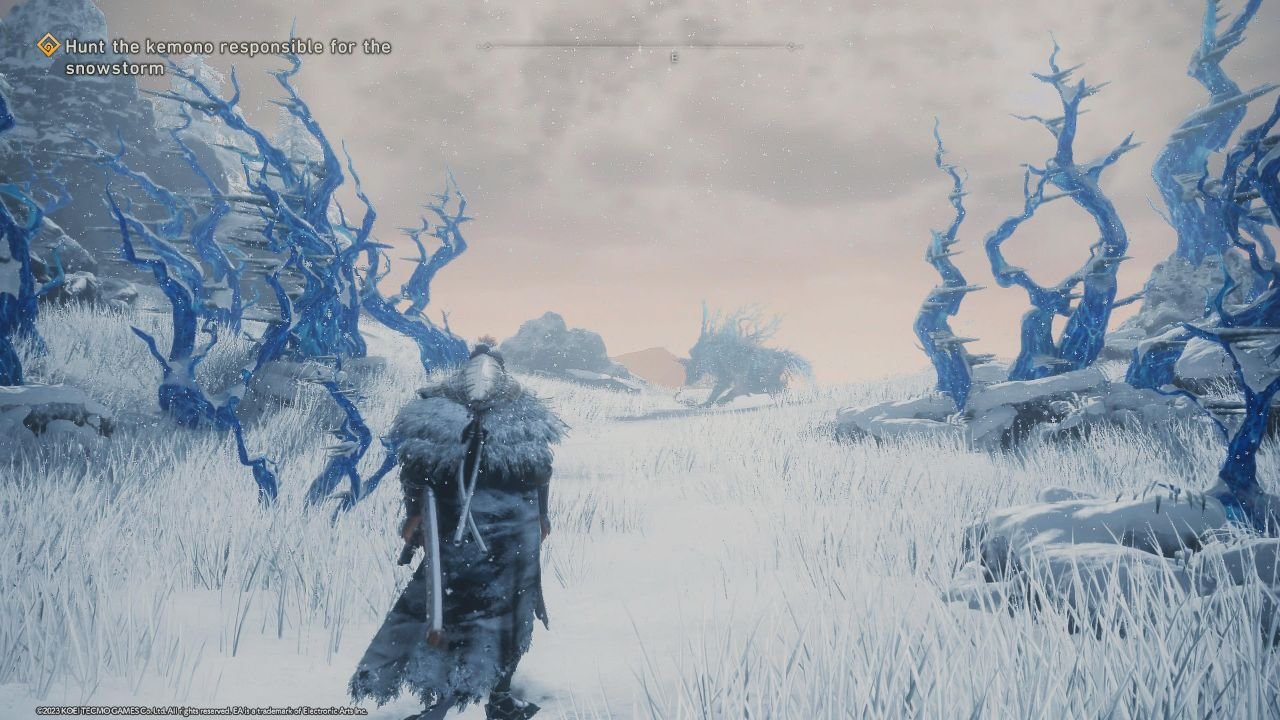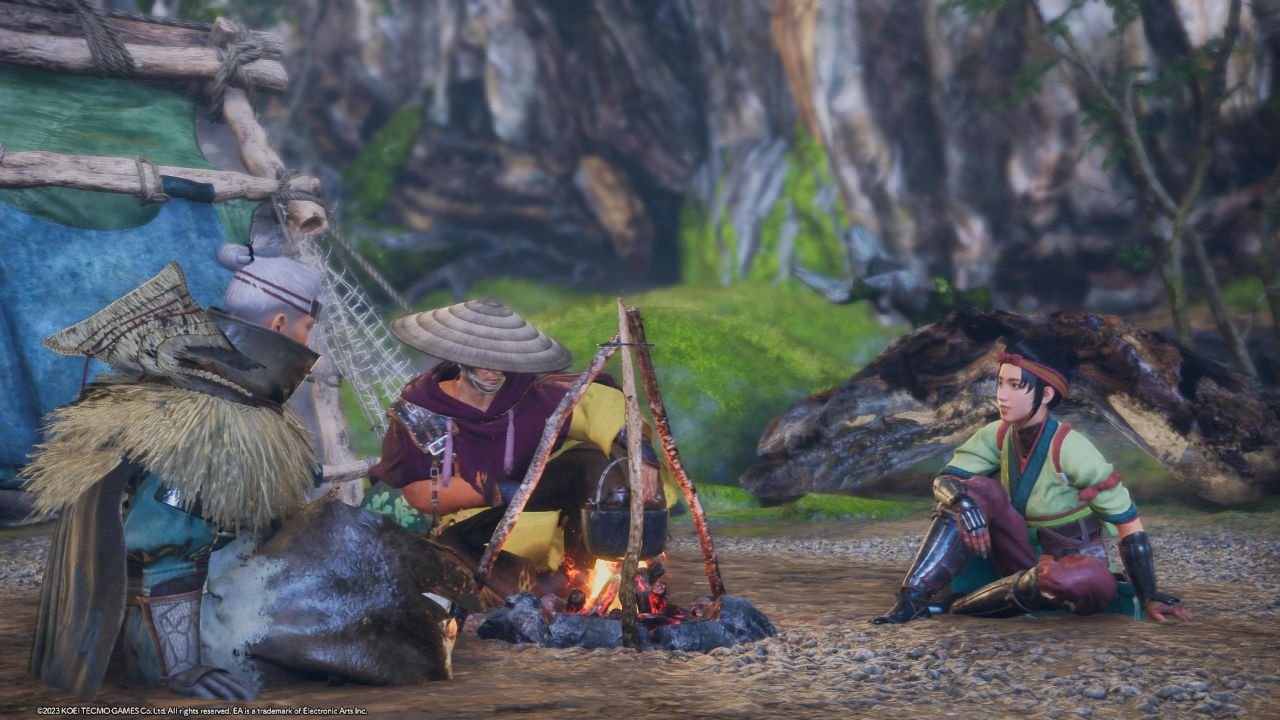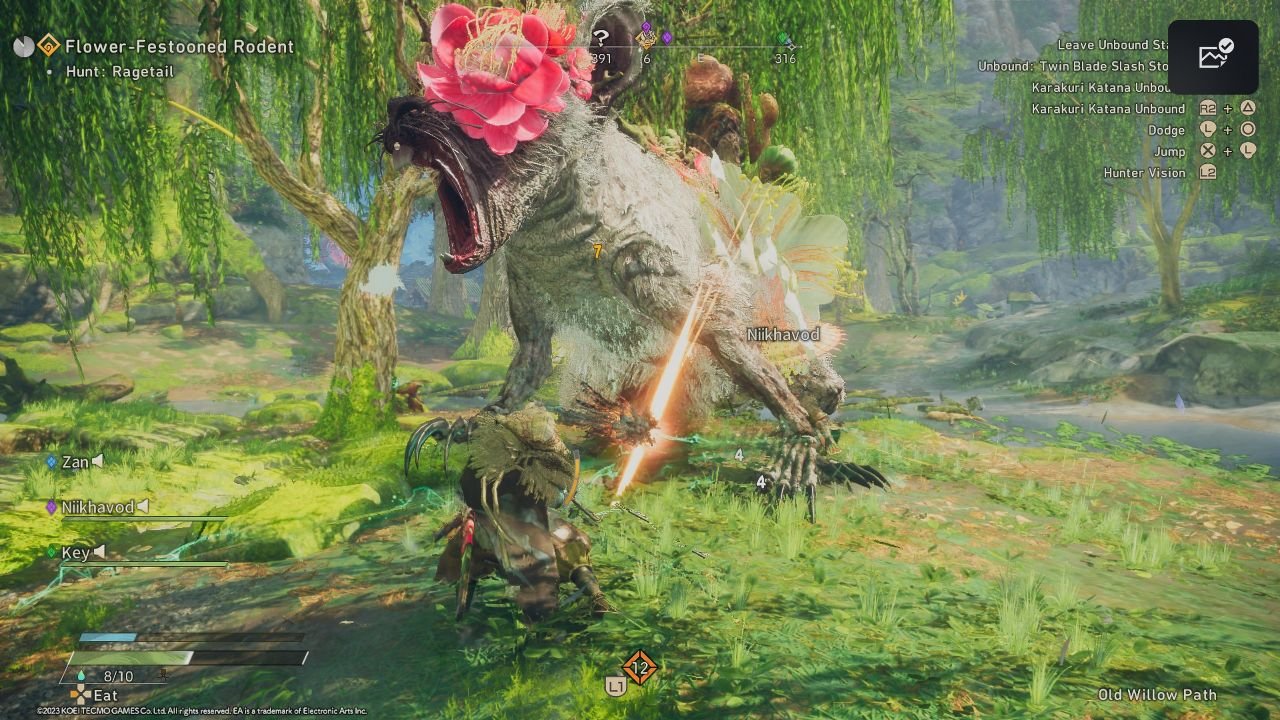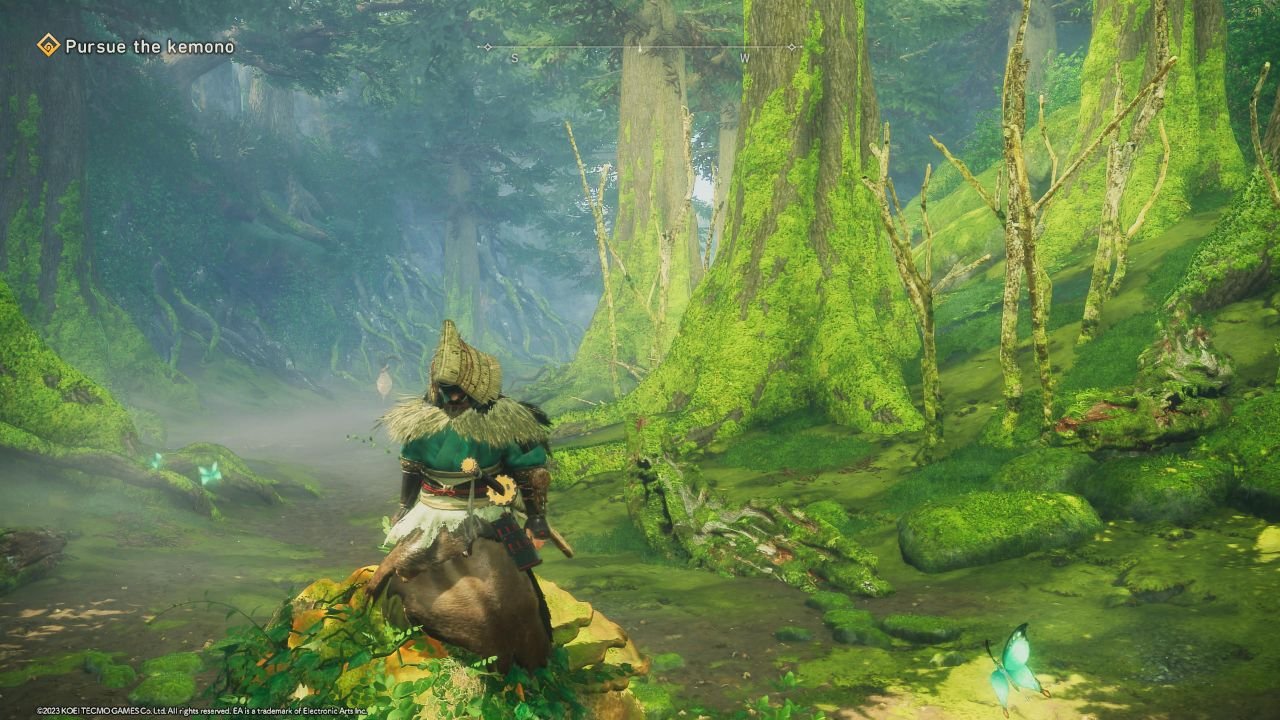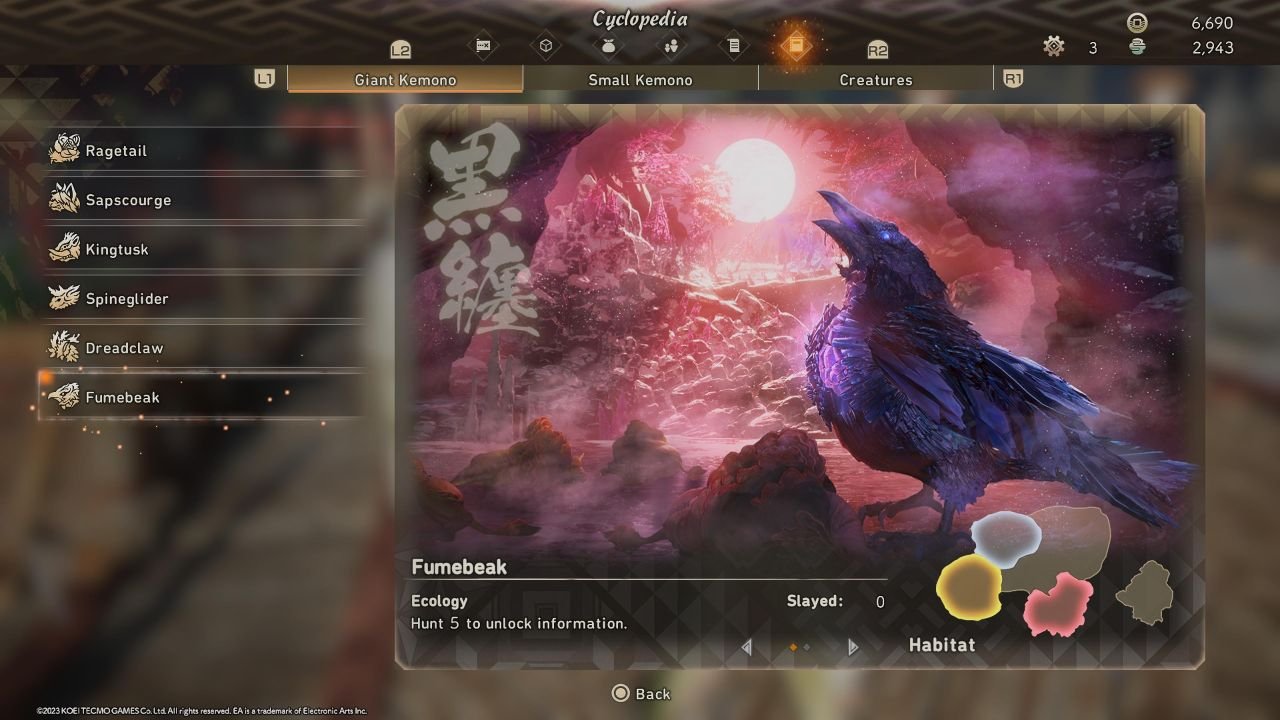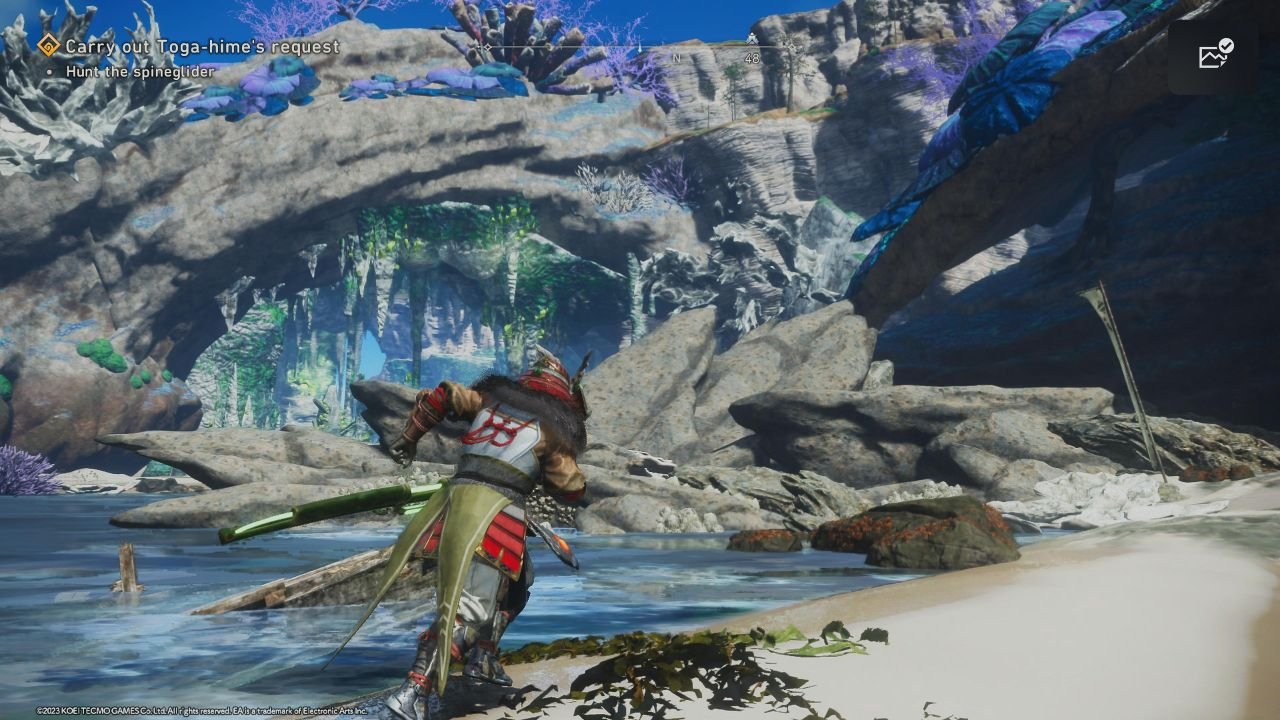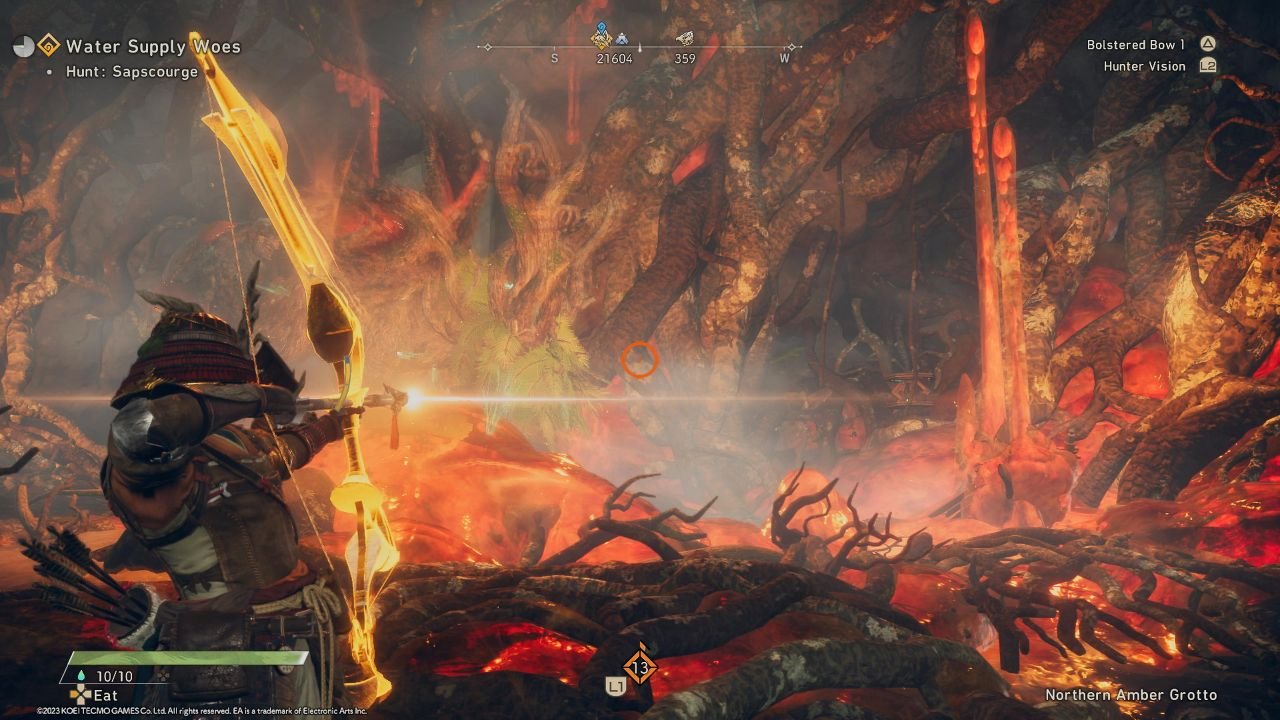PlayStation 5 code provided by EA
Video games are a fantastic medium for living out fantastical adventures that players can’t necessarily experience in real life, or would rather not. Hunting is not ideal for some gamers as it involves touching grass and cleaning up any kills that may be taken. To allow for this, games like theHunter or Hunting Simulator have players stalk and take down a variety of real-life animals with realistic weaponry. However, many gamers would rather hunt for bigger game.
Enter the action role-playing games that see you taking down massive monsters for their parts or for quests. Made famous by the various Monster Hunter games, we also see new challengers enter the arena as time passes. The newest of these is Wild Hearts, developed by Omega Force in partnership with Electronic Arts. While some players might yell that it is just “another Monster Hunter clone”, it has many differences once you get beyond the hunting monsters part. Read on to hear my thoughts on Wild Hearts.
Story
The game is based in a fantasy world inspired by feudal Japan, Azuma, where fierce creatures fused with the powers of nature called Kemono have caused devastation and forced out most human inhabitants. The player character is a wandering hunter who discovers an ancient technology called Karakuri. After encountering these dangerous Kemono, the hunter sets out to defeat them and protect the remaining humans by utilizing the ancient technology to give them an advantage. Each new beast is wildly unique and will test the abilities of even the most veteran of hunters. Due to a distinct lack of powerful hunters to fight these beasts, the intervention of the player character is most welcomed by the remaining inhabitants of the city of Minato, their new home.
As you continue through the game, fighting wilder Kemono and traveling to different regions, you will assist a multitude of characters with their troubles and help bring a land on the verge of vanishing to relevance again. While interesting, the story truly only felt like a guided tour for the main attraction, the monster hunting itself. Many of the characters felt one note and didn’t really change over the course of my time with the game, and while I haven’t finished it yet I can almost sense the ending unless an epic plot twist is forthcoming. With that being said, I never groaned about the story missions as they were enjoyable and featured some solid voice acting in many places. This connection also meant the game felt whole, instead of separating from the main and side quests. I was constantly prompted to go do some side hunts or upgrade abilities before continuing with my main quest, almost feeling like these side quests were part of the storyline.
Gameplay
Wild Hearts is played in 3rd-person and features a combo-based attack system, where charging attacks or changing up how a combo plays out is important in staying alive and doing damage while dodging to avoid getting hit. Between hunts, players will spend time in Minato, the hub city with traders and crafters. Each player has their own version, and visiting players from the co-op or a hunting request can even enter the city if they desire.
The co-op is quite seamless and requires a simple press of a button or interaction with portals found throughout the world. Every hunt will prompt you to open and invite other players if you choose, and I found myself utilizing it a few times to great success each time. As you level you will grow your skills and forge your weapons toward different playstyles, and each of my guests felt quite unique from their clothes and emotes to their weapons and ways of fighting.
Multiple weapon types are available and play vastly differently, from a bow with multiple attack stances to an umbrella with blades. Some weapons work better against certain Kemono, and understanding what each weapon specializes in allows better chances for success. In battle, utilizing Karakuri is done through a quick cast menu that allows up to 4 different base structures to be built, such as boxes, springs, and torches. Each allows a new attack, such as climbing a box or set of boxes to do a plunging drop attack, or catching your weapon aflame via the torches. More interestingly though, each of those base items can be combined in certain structures to create fusion Karakuri that can change the tide of a battle. 6 boxes stacked in two rows will create a bulwark wall that charging Kemono will bounce off of, while 3 stacked springs create a hammer trap that can do massive damage. These additions totally separate Wild Hearts from Monster Hunter and actually made these hunts a lot more exciting for me, and the intuitiveness of it made it quick to understand and utilize in action.
A big shout-out needs to be included for the number of accessibility options available, as I haven’t seen so many options in any games I can remember, and it will definitely allow an often overlooked group of gamers to engage in a new adventure.
Beyond the combat though, missions and hunts will take place in large open areas that feature multiple arenas where battles can take place. As a Kemono is hurt, it will retreat to a different arena with the hunter pursuing and re-engaging. However, throughout each of these hunting zones, players will be able to create Dragon Karakuri, special creations that will give benefits in the region and draw from the area’s pool of resources. Examples would be a zip line, various camp items such as a tent, campfire, or forge, and a hunting tower that can locate Kemono in a certain vicinity. Each Dragon Karakuri will be visible on the map and can allow interesting gameplay mechanics as hunters become more accustomed to each region.
I had ziplines to cross large spaces between areas and camps set up near Kemono spawns to fast-travel to. I never felt too far from where I needed to go, and could more effectively chase the Kemono once they started running through my network of Karakuri. This ability to customize my hunting zone to fit my needs meant I felt much more in tune with the area as I kept doing quests and hunts there, and moving to a new area became much more interesting as I was forced to find routes, spawns, and place Karakuri all over again in a wildly different environment.
Audio And Visual
Wild Hearts is gorgeous. Bright and vivid hunting grounds are full of color and interesting shadows and seeing the areas change as you fight Kemono is super cool. Trees are knocked over, rocks blown apart, and gauges ripped out of the dirt make these epic battles more visually exciting, and that doesn’t even include the fantastic art direction for the beasties you will be fighting. A giant rooster with rocks all over. A boar with fiery eyes and the power to attack you with tree roots. Each of these enemies is visually stunning and wildly different and when you discover a new one it is so exciting because of that. However, on the PlayStation 5 version, I have experienced some visual bugs and stuttering while running it in performance mode which can be jarring.
One of my favorite parts of playing video games is epic soundtracks while I do epic stuff. Wild Hearts pulls this off brilliantly with a fairly dynamic soundtrack that connects well to the action on screen, and overlays the sounds of battle with a good mix. While there aren’t a huge amount of truly unique tracks, there are many different variations of different themes that recur in different zones, giving flavor to songs that have already been heard in a few battles. The sound effects and voice acting is also great, and both the Japanese and English voice-overs are well performed and kept me engaged.
Replayability
How much do you like fighting monsters? How many side-hunts fighting the same rat monster can you undertake without getting bored? These are the questions that each player must answer to decide their level of replayability. Once you discover the whole of the game and fight all the enemies, there will probably still be plenty of hunting to be done. While I haven’t finished it entirely, there are plenty of hunting zones to explore and Kemono to fight and the freshness keeps me coming back. While I have yet to experience any endgame content, people who enjoy the overall gameplay loop will be able to come back to Wild Hearts for many more hours of hunting. Currently, there is no DLC, but if they add on more regions or questlines I would probably hop back into Azuma to chase down a big rock/tree animal again.
What It Could Have Done Better
Graphical issues and camera struggles were my biggest complaints about Wild Hearts. While the game was still very pretty, I would frequently have little stutters or issues with monster parts appearing/disappearing. This was definitely a problem when I’m trying to dodge a monster’s antlers or claws and can’t see them. Camera positioning could become a chore at time, and the lock-on feature made the camera angle feel weird at inopportune moments. I would regularly have my camera behind something I couldn’t see through, meaning I instantly lost immersion and connection to my character because where did he go?! While this was frustrating, it didn’t completely ruin my experience and these were momentary problems.
My one wish was that the story was more enticing and we saw more development from the characters. From what I have played I have only seen one facet of each character and they all have one function or purpose. The blacksmith is a blacksmith, the drunk is a drunk, and some of the interesting characters around Minato feel like afterthoughts and aren’t fully fleshed out. With such a cool setting and characters that had me interested from the start, I quickly lost that interest in these characters beyond being launch points for missions. While they are still fun, the lack of new interactions between familiar characters meant I felt like my hunter was never truly involved in their lives beyond the odd cutscene where they tell me how involved I am in their lives. Sometimes showing is better than telling.
Verdict
I had a lot of fun with Wild Hearts, and it got me into a type of game that I don’t often play. Monster Hunter was a lot to comprehend and felt very technical, while Wild Hearts feels intuitive and natural. The upgrade system allows a lot of flexibility, and the Karakuri are a fun feature that constantly had me thinking of new moves on the fly or creating fusions to change the fights in my favor. Plus, you can find little robot guys that populate your camps and machines and assist you in combat. All around, a great amount of fun was had and remains to be had, and I believe many gamers will agree with me. Wild Hearts takes a great genre forward and makes it more accessible for casual fans, as well as differently-abled folks.
Wild Hearts is out now on PC via Steam and the Epic Games Store, PlayStation 5, and Xbox Series X|S. Check out the story trailer below and let us know your thoughts in the comments!
